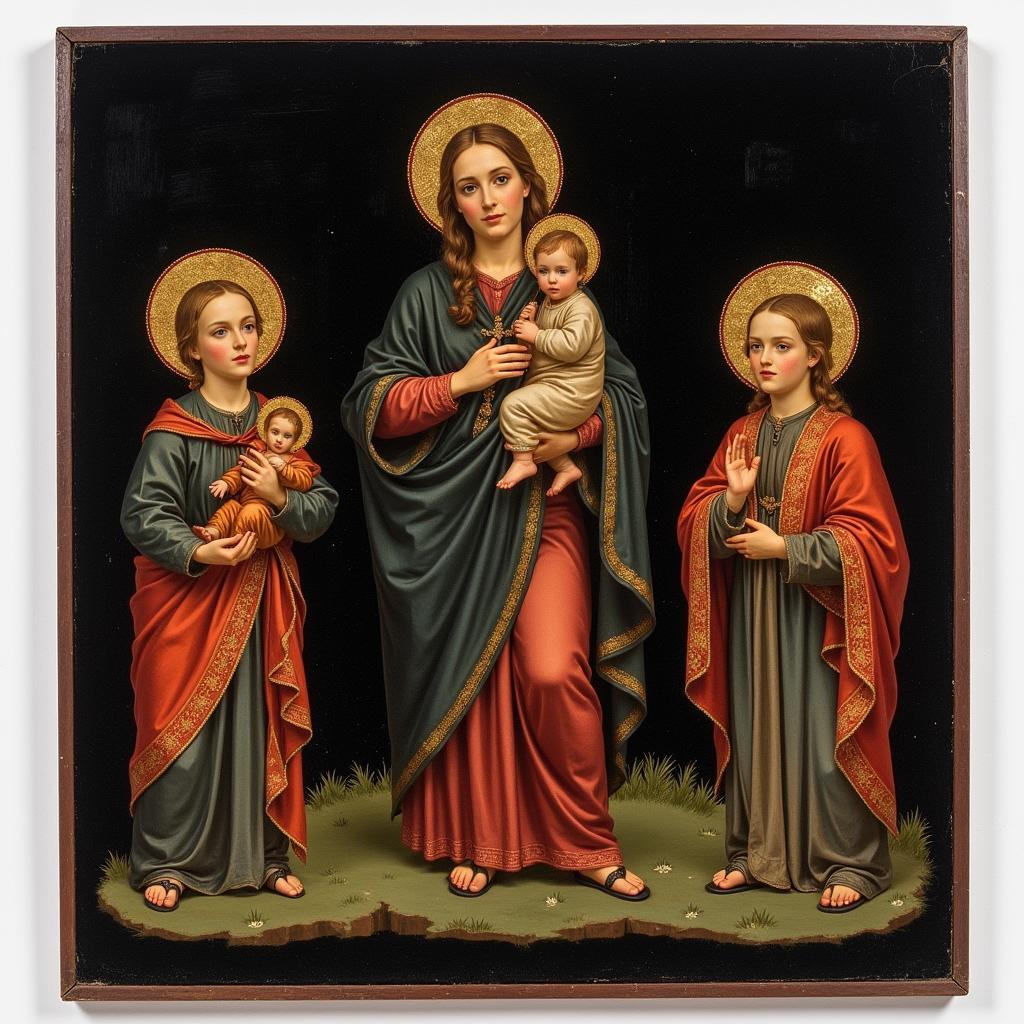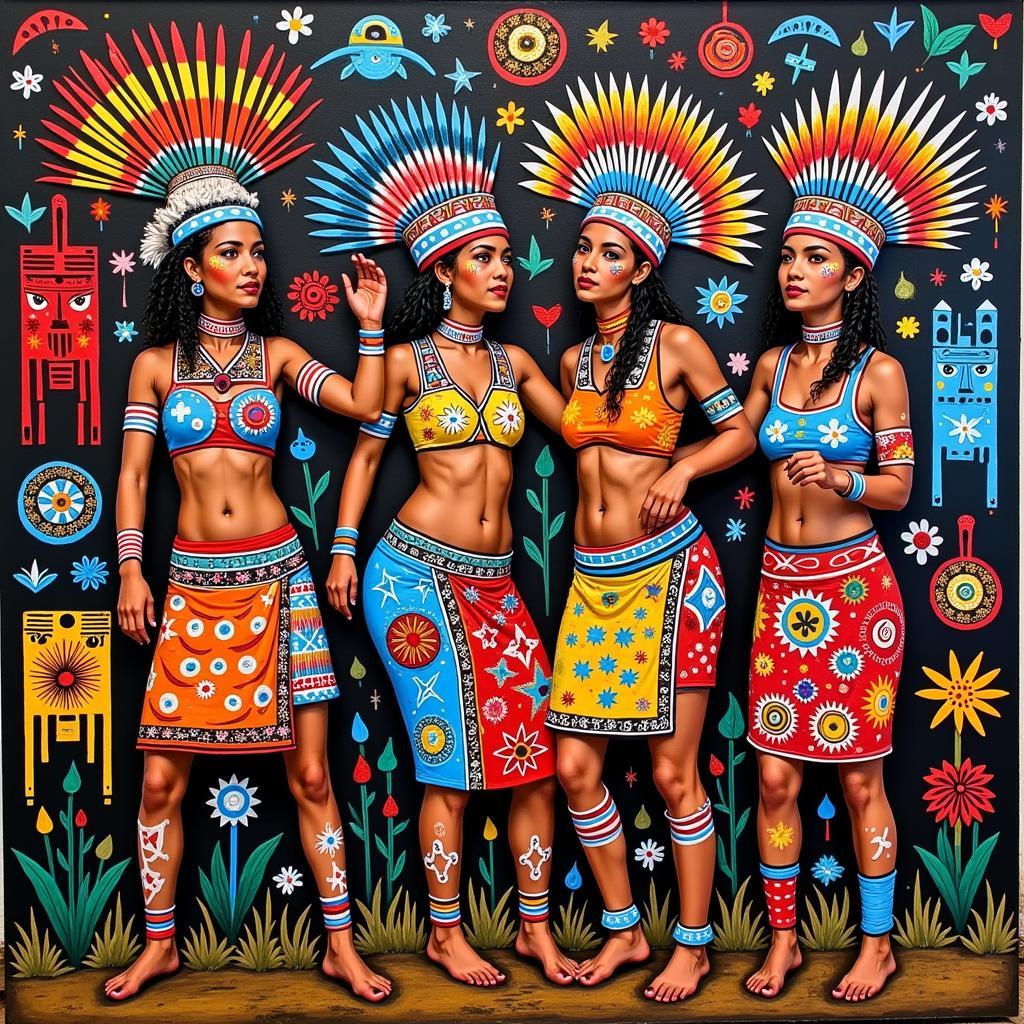Unveiling the Allure of African American Black Velvet Paintings
African American Black Velvet Paintings emerged as a captivating art form, often overlooked in traditional art historical narratives. These striking artworks, characterized by their bold imagery and vibrant colors set against a rich, dark backdrop, hold a unique place in the tapestry of American art and cultural expression.
A Journey Through Time: Tracing the Roots
While the precise origins of black velvet paintings are shrouded in mystery, their roots can be traced back centuries.  Early examples of black velvet art Some art historians suggest that the technique originated in the Far East, finding its way to Europe through trade routes. During the 17th century, European artists embraced the use of velvet as a canvas, particularly for religious icons and portraits. This practice eventually traversed the Atlantic, taking root in the Americas.
Early examples of black velvet art Some art historians suggest that the technique originated in the Far East, finding its way to Europe through trade routes. During the 17th century, European artists embraced the use of velvet as a canvas, particularly for religious icons and portraits. This practice eventually traversed the Atlantic, taking root in the Americas.
The Rise of a Cultural Phenomenon
In the United States, black velvet paintings experienced a surge in popularity during the mid-20th century. Often sold by street vendors and in tourist shops, they became associated with kitsch and affordability. However, beneath their mass-produced appeal lay a deeper significance, particularly within African American communities.
Embracing Identity and Representation
For many African Americans, black velvet paintings offered a powerful means of self-representation at a time when traditional art spaces often excluded their narratives. Artists embraced the medium to depict black icons, leaders, and scenes from everyday life, reclaiming agency and celebrating their heritage. These artworks became symbols of pride, resilience, and cultural affirmation.
Thematic Explorations: From Icons to Everyday Life
One of the most compelling aspects of African American black velvet paintings is their thematic diversity. Religious imagery, particularly depictions of Jesus Christ, held a prominent place, reflecting the deep spirituality within many black communities. These paintings often reimagined biblical figures with African features, fostering a sense of spiritual connection and belonging.
Celebrating Black Icons
Alongside religious themes, black velvet paintings celebrated a pantheon of black icons, from historical figures to entertainers and athletes. Portraits of Martin Luther King Jr., Malcolm X, and Harriet Tubman served as powerful reminders of the ongoing struggle for civil rights and equality. Musicians like Aretha Franklin, Jimi Hendrix, and James Brown were immortalized in vibrant hues, their music and legacies resonating through the generations.
Capturing the Everyday Experience
Beyond the realm of icons, many black velvet paintings captured the beauty and nuances of everyday life within African American communities. Family gatherings, street scenes, and musical performances were all immortalized on velvet canvases, providing glimpses into the rich tapestry of black experiences. These artworks served as visual narratives, preserving cultural traditions and passing down stories from one generation to the next.
The Enduring Legacy of Black Velvet Art
Today, African American black velvet paintings continue to captivate and intrigue, their significance extending far beyond their initial categorization as kitsch. Art historians and collectors have begun to recognize their artistic merit, cultural value, and historical significance. Museums and galleries are now showcasing these works, providing a platform for deeper understanding and appreciation.
The allure of African American black velvet paintings lies in their ability to spark conversations, challenge perceptions, and celebrate the richness and resilience of black culture. They serve as a testament to the power of art to reflect, inspire, and empower.
